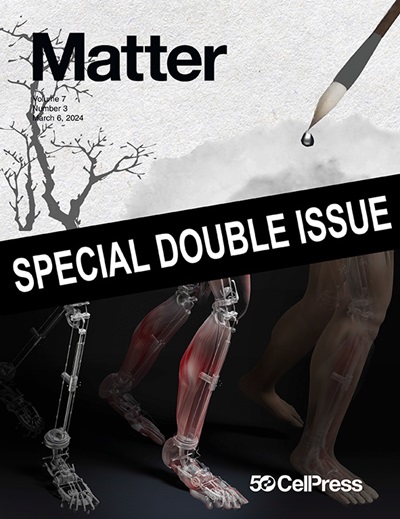Accelerating CO2 direct air capture screening for metal-organic frameworks with a transferable machine learning force field
IF 17.5
1区 材料科学
Q1 MATERIALS SCIENCE, MULTIDISCIPLINARY
引用次数: 0
Abstract
Direct air capture (DAC) of CO2 is necessary for climate change mitigation, but it faces challenges from low CO2 concentrations and competition from water vapor. Metal-organic frameworks (MOFs) hold significant promise for DAC owing to their high surface area and adsorption-based capture processes. However, identifying optimal MOFs is hindered by structural complexity and vast chemical diversity. Here, we introduced a machine learning force field (MLFF) tailored for CO2 and H2O interactions in MOFs by fine-tuning a foundation model. To address smoothing issues and catastrophic forgetting, we curated the GoldDAC dataset and introduced a continual learning scheme. We further developed DAC-SIM, a molecular simulation package integrated with MLFF, including a Widom insertion. Then, we screened an extensive MOF database, uncovering high-performing MOFs and identifying chemical features for DAC applications. This approach overcomes prior limitations in describing MOF-CO2 and MOF-H2O interactions, providing a scalable and accurate framework for DAC research of porous materials.


利用可转移的机器学习力场加速金属有机框架的二氧化碳直接空气捕获筛选
二氧化碳的直接空气捕获(DAC)对于减缓气候变化是必要的,但它面临着低二氧化碳浓度和水蒸气竞争的挑战。金属有机框架(mof)由于其高表面积和基于吸附的捕获过程,在DAC中具有重要的前景。然而,结构复杂性和化学多样性阻碍了最佳mof的确定。在这里,我们通过微调基础模型,引入了针对mof中CO2和H2O相互作用量身定制的机器学习力场(MLFF)。为了解决平滑问题和灾难性遗忘,我们整理了GoldDAC数据集,并引入了一个持续学习方案。我们进一步开发了DAC-SIM,这是一个与MLFF集成的分子模拟包,包括一个Widom插入。然后,我们筛选了一个广泛的MOF数据库,发现了高性能的MOF,并确定了DAC应用的化学特征。该方法克服了先前描述MOF-CO2和MOF-H2O相互作用的局限性,为多孔材料的DAC研究提供了可扩展和准确的框架。
本文章由计算机程序翻译,如有差异,请以英文原文为准。
求助全文
约1分钟内获得全文
求助全文
来源期刊

Matter
MATERIALS SCIENCE, MULTIDISCIPLINARY-
CiteScore
26.30
自引率
2.60%
发文量
367
期刊介绍:
Matter, a monthly journal affiliated with Cell, spans the broad field of materials science from nano to macro levels,covering fundamentals to applications. Embracing groundbreaking technologies,it includes full-length research articles,reviews, perspectives,previews, opinions, personnel stories, and general editorial content.
Matter aims to be the primary resource for researchers in academia and industry, inspiring the next generation of materials scientists.
 求助内容:
求助内容: 应助结果提醒方式:
应助结果提醒方式:


